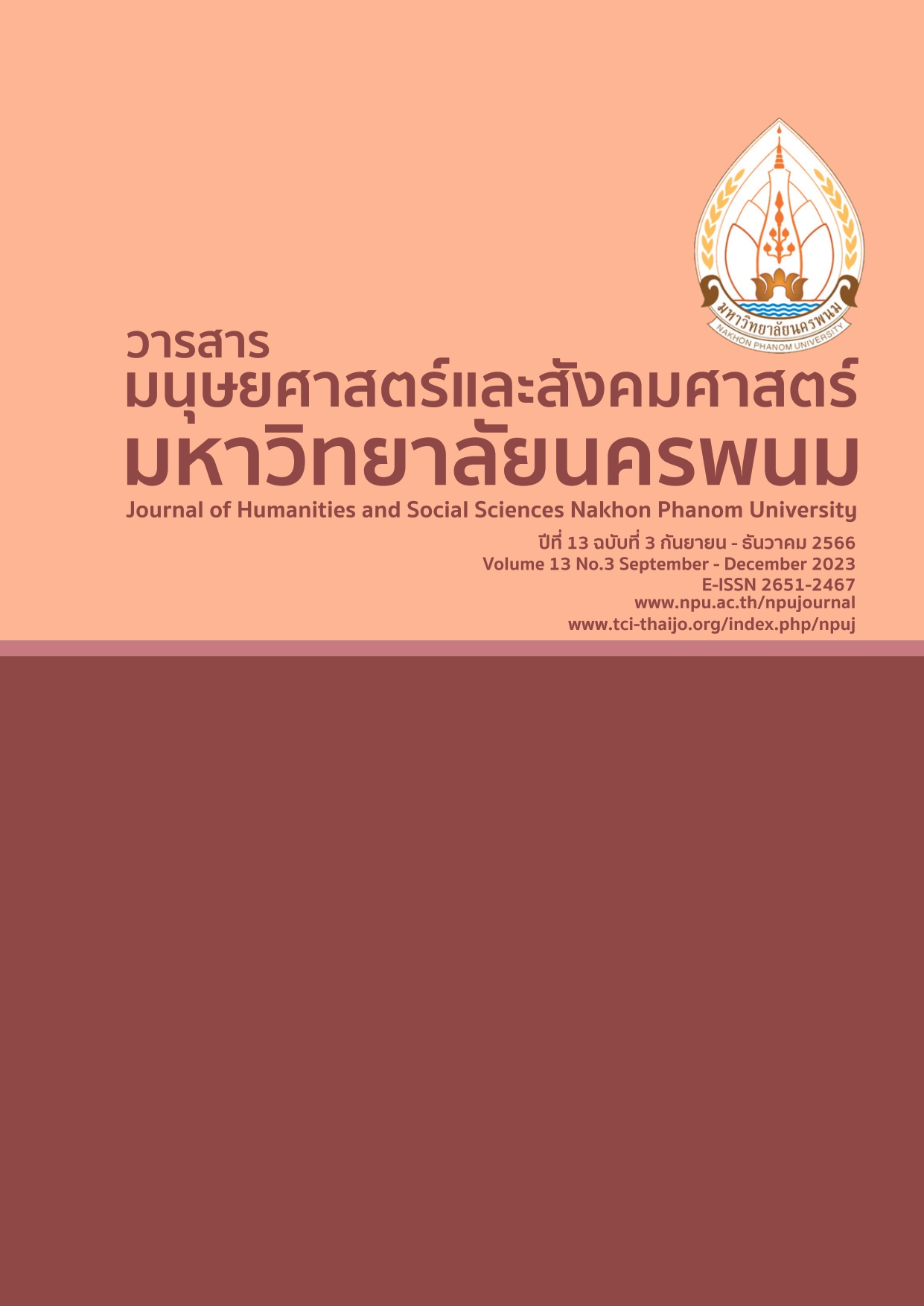Gamification Mechanism and Elements Affecting Gamification Dynamics: A Case of Generation Z in Thailand
Main Article Content
Abstract
This study aims to discover gamification mechanisms and elements affecting gamification dynamics. A quantitative cross-sectional study was used to collect data from 350 generation Zs across Thailand. The data were analyzed using descriptive statistics such as frequency, means, and standard deviation As well as an analysis of variance (ANOVA), correlation, and regression respectively. The research found that there is a significant dynamic at .05 level of gamification for different genders and education levels. However, an analysis of correlation found that game feedback and game challenges (r = .80, p < .00) had the highest value, followed by the challenges and types of game (r = .77, p < .00). Moreover, the results of game mechanism found that and points, levels, leaderboards, and teammate(s) are significantly affect game dynamics. The organization can use the research result to apply for policy formulation in order to develop human resource using the gamification process, which can help the organization increase its competitive capability continually.
Article Details

This work is licensed under a Creative Commons Attribution-NonCommercial-NoDerivatives 4.0 International License.
References
Brune, A. (2021). Gen Z Gamers: Key Insights. Retrieved March 2023, from https://newzoo.com/insights/articles/ gen-z-gamers-key-insights.
Cochran, W. G. (1953). Sampling techniques. New York : John Wiley & Sons.
Denton, M. (2022). Game mechanics & game dynamics: Gamification 101. Retrieved March 2023 from https://www.gamify.com/gamification-blog/gamification-101-game-mechanics-game-dynamics
Goethe, O. (2019). Visual aesthetics in games and gamification. In Gamification Mindset (pp. 85-92). Springer, Cham.
Grünewald, H., Kneip, P. and Kozica, A. (2019). The use of gamification in workplace learning to encourage employee motivation and engagement. The Wiley handbook of global workplace learning. 1,557-575. https://doi.org/10.1002/9781119227793.ch29
Kaufman, D. A. (2018). Reflection: Benefits of gamification in online higher education. Journal of Instructional Research. 7,125-132. https://eric.ed.gov/?id=EJ1188367
Krishnamurthy, K., Selvaraj, N. and Gupta, P. (2022). Benefits of gamification in medical education. Clinical Anatomy. 35(6),795-807. https://doi.org/10.1002/ca.23916
Landers, R. N., Bauer, K. N. and Callan, R. C. (2017). Gamification of task performance with leaderboards: A goal setting experiment. Computers in Human Behavior. 71,508-515. https://doi.org/10.1016/j.chb.2015.08.008
Lithoxoidou, et al. (2020). A novel social gamified collaboration platform enriched with shop-floor data and feedback for the improvement of the productivity, safety and engagement in factories. Computers & Industrial Engineering. 139,105691. https://doi.org/10.1016/j.cie.2019.02.005.
Liu, M., Huang, Y. and Zhang, D. (2018). Gamification’s impact on manufacturing: Enhancing job motivation, satisfaction and operational performance with smartphone-based gamified job design. Human Factors and Ergonomics in Manufacturing & Service Industries. 28(1),38–51. https://doi.org/10.1002/hfm.20723.
McGonigal, J. (2011). Reality is broken: Why games make us better and how they can change the world. USA : Penguin.
Moore-Russo, D., Wiss, A. and Grabowski, J. (2017). Integration of gamification into course design: A noble endeavor with potential pitfalls. College Teaching. 1-13. doi:10.1080/87567555.2017.1295016
Nivedhitha, K. S. and Manzoor, A. S. (2020). Gamification inducing creative ideation: A parallel mediation model. Behaviour & Information Technology. 39(9),970-994. https://doi.org/10.1080/0144929X.2019. 1635646
Rakrong, P., Banjongrod, T. and Utitasarn, C. (2022). The Effects of Mathematics learning through gamification approach online practice worksheet on Mathematics achievement of Mathayomsuksa 1 Students. Journal of Education Studies. 50(2),1-14. https://doi.org/10.14456/educu.2022.17
Sailer, M. and Homner, L. (2020). The gamification of learning: A meta-analysis. Educational Psychology Review. 32(1),77-112. https://doi.org/10.1007/s10648-019-09498-w
Satomuhammas, S. (2018). The development of learning activity using gamification technique to rise Mathematics learning achievement about linear equation system for Mattayom 3 students, Suankularb Wittayalai Thinburi School. Bangkok, Research Report. Office of the Basic Education Commission. Ministry of Education, Thailand.
Saxena, M. and Mishra, D. K. (2021). Gamification and Gen Z in higher education: A systematic review of literature. International Journal of Information and Communication Technology Education (IJICTE). 17(4),1-22.
Seemiller, C. and Grace, M. (2016). Generation Z goes to college. USA : John Wiley & Sons.
Suwannaslip, T. (2021). Gamification. Bangkok : Salt.
Thomas, N. J., Baral, R. and Crocco, O. S. (2022). Gamification for HRD: Systematic Review and Future Research Directions. Human Resource Development Review, 21(2). 198-224. https://doi.org/10.1177/15344843221074859
Vesa, M., Hamari, J., Harviainen, J. T. and Warmelink, H. (2017). Computer games and organization studies. Organization Studies. 38(2),273–284. https://doi.org/10.1177/ 0170840616663242
Vanichbuncha. K. (2007). Statistical analysis: Statistics for management and research. (10th ed). Bangkok : Chulalongkorn University Press.
Wuttaphan, N. (2018, November). Diversity Management: When Generation Z Comes to the Workplace and How Human Resources Can Manage. In Proceedings of the 7th Business, Economics and Communications International Conference, Phitsanulok, Thailand (pp. 29-30). Phitsanulok, Naresuan University.


